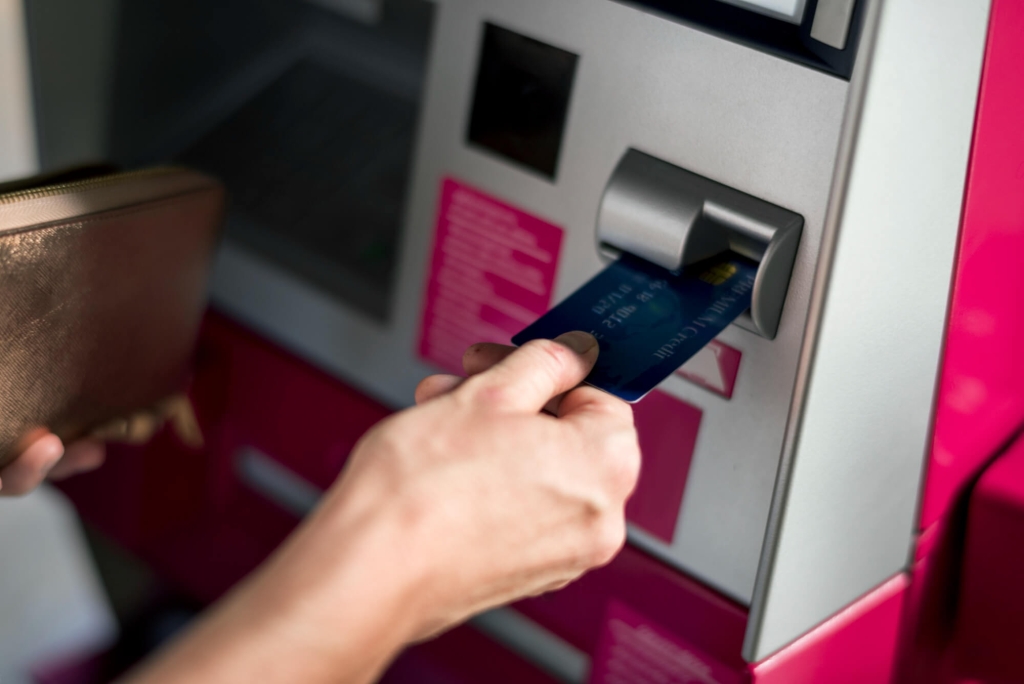
Want to find out how to withdraw money from your credit card? See below how it's possible.
The amount you can borrow using a cash advance is usually limited to a percentage of your total credit limit.
Borrowers with good credit scores may be eligible to borrow more than those with lower scores.
For example, if you have a credit limit of R$1,000 and your card issuer offers cash advances of up to R$20% of your limit, you can borrow up to R$200. Your recent credit card statement, online account and cardholder agreement should contain information about your cash advance limit.
See below how to withdraw money from your credit card

When talking about how to withdraw money from a credit card, the first step is to look for an ATM.
If your card does not have a bank, or does not have a representative in the city, know that the 24-hour ATM provides the service.
To withdraw money from your credit card, simply insert your card into the cash register, select the withdrawal option, then enter the amount (remembering that the amount must be within your available limit) and enter the 4-digit password.
You can withdraw money from your credit card account using an ATM. However, you must set up a PIN with your credit card issuer.
Using your PIN and the cash advance option, you can insert your credit card into any eligible ATM to access the funds immediately.
Your withdrawal is subject to your cash advance limit, and the ATM may also have a limit on how much you can withdraw in a single day.
You can visit a credit bank teller to get a cash advance from your credit card account.
You will need your credit card and photo ID to withdraw cash.
Now that you know how to withdraw money from credit card, you can think of a credit card cash advance as a short-term, albeit expensive, loan. A credit card cash advance usually comes with substantial credit card fees.
Cash Advance Fee: Your credit card cash advance will likely incur a cash advance transaction fee.
This fee can be a set amount in dollars per transaction or a percentage of the total amount of money you are withdrawing from your credit card account. Check your credit card terms for details on your card's fees.
ATM fee: Many banks charge a fee when you withdraw cash from an ATM. The same goes for making a withdrawal using your credit card. There may even be a separate fee for cash advance transactions.
Foreign cash advance fees: Foreign cash advances can be convenient while traveling, especially for emergencies, but you'll have to decide whether it's worth paying the additional fees or tripling the transaction costs.
Foreign transaction fees, ATM fees, currency conversion fees, and cash advance fees add up quickly. And that’s on top of the already higher interest rate you’ll likely pay for the cash advance.

A cash advance may be tempting if you need money fast, but you may want to consider how it could affect your credit score.
Because you're borrowing money against your credit limit, you're increasing your overall credit utilization (how much of your total available credit is in use). And if you can't pay off the loan right away, the high interest rates can put you deeper into credit card debt.
When your total credit balance gets too high, it can negatively affect your credit score.
That said, a cash advance won't necessarily have a long-term impact on your credit score.
Your score will likely recover if you can pay off your loan quickly. Paying more than the minimum monthly payment is one way to pay off your credit card balance faster.
And credit card companies are required to apply amounts above the monthly minimum to the balance with the highest interest rate.
In other words, your extra payments will go toward your cash advance loan before your regular interest purchases.
Now that you know how to withdraw money from your credit card, as a cash advance is generally an expensive way to borrow money, it may help to add up the potential costs before your decision.
You may also want to consider other ways to borrow money, such as a personal loan, which may offer a lower interest rate.
Understanding the short- and long-term costs of any loan is key to finding the right loan for you.